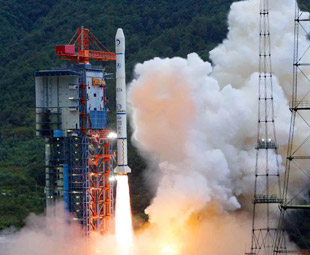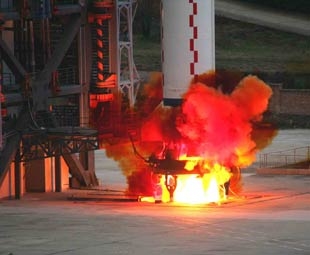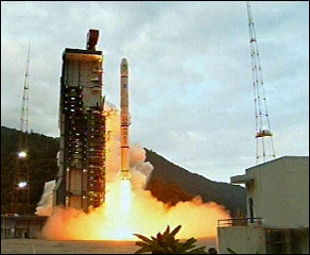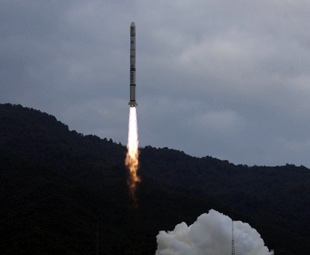China launched its first lunar probe on Wednesday, the first step into its ambitious three-stage moon mission, marking a new milestone in the country's space exploration history.
The circumlunar satellite Chang'e-1 blasted off on a Long March 3A carrier rocket at 6:05 p.m. from the No. 3 launching tower in the Xichang Satellite Launch Center of southwestern Sichuan Province.
Space experts from Japan, Germany and other countries joined their Chinese colleagues at the launch site to watch the launching process.
"The launch was very successful, and everything is proceeding just as it's planned," said Wu Ji, director of the Space Science and Applied Research Center under the Chinese Academy of Sciences (CAS).
Chang'e-1 separated from carrier rocket at 6:29 p.m. and entered into a 16-hour orbit at 205 kilometers perigee and 50,930 kilometers apogee, according to the Beijing Aerospace Control Center (BACC).
Chang'e-1, named after a legendary Chinese goddess of moon, is expected to enter earth-moon transfer orbit on October 31 and arrive in the moon's orbit on November 5.
Flying to the moon is the nation's long cherished dream, as Chang'e has been worshipped as the "moon lady" for thousands of years. Legend has it that she floated toward the sky and finally landed on the moon after taking a bottle of elixir, where she became a goddess accompanied by a jade rabbit.
Chang'e-1 is so far the most sophisticated satellite China has ever built. They will maneuver it at least 10 times before it arrives in the moon's orbit. China's Shenzhou VI manned spacecraft was maneuvered three times by scientists in the flight control center.
As the satellite has to be maneuvered 10 times, the fuel that Chang'e-1 carries accounts for nearly half of the satellite's total weight, scientists said.
The satellite will relay the first picture of the moon in late November and will then continue scientific explorations of the moon for a year.
It will carry out a series of projects including acquiring 3-D images and analyzing the distribution of elements on the moon's surface.
Luan Enjie, chief commander of China's lunar orbiter project, said that the moon mission in modern time will boost the development of human kind's deep space explorations.
"China will, in the principle of pursuing a policy of peaceful use of airspace, share the achievements of the lunar exploration with the whole world," Luan said.
"China will not be involved in moon race with any other country and in any form," he told Xinhua before the launch.
(China.org.cn Xinhua News Agency October 24, 2007)






